10 Giant Menorahs That Will Light Up for Hanukkah in NYC
From Brooklyn to the Bronx, we’ve rounded up the most exciting giant menorahs that will light up throughout the next eight evenings!


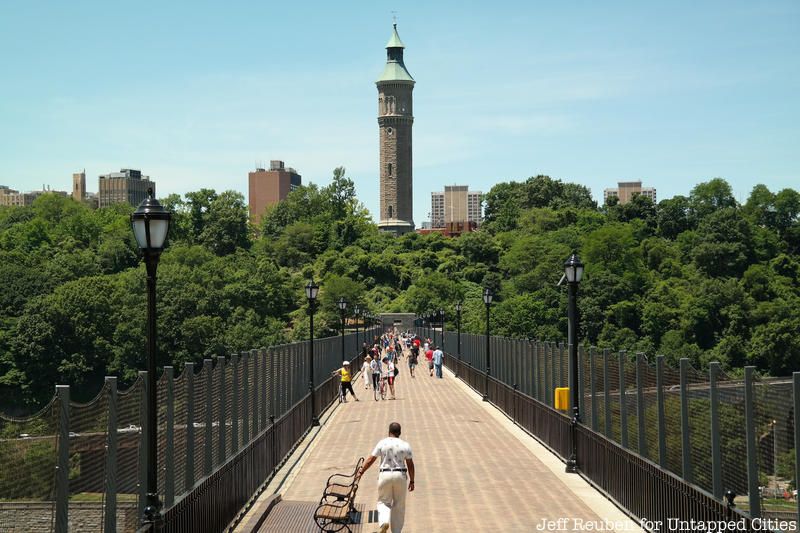
In 1848, High Bridge, the oldest surviving bridge in New York City, was built to bring water to the burgeoning city of New York. Aside from transporting water, the bridge connected the metropolitan borough of Manhattan to the lush rural area of the Bronx, so that both city dwellers and those who lived in the country could easily travel back and forth. After being closed for over forty years, the bridge, built in the style of ancient Roman aqueducts, was opened to pedestrians in the summer of 2015.
Read on for the top ten secrets of High Bridge, from its origins to the present day, and join us on March 30th at 12 p.m. for a virtual walk over Manhattan’s oldest surviving bridge with Chief Experience Officer Justin Rivers. Learn the history behind this unique bridge’s construction and the monumental feat to bring clean drinking water to a thirsty New York, examine how the bridge was one of New York City’s most sought after attractions during the late 1800s, debunk a long-standing myth about Edgar Allen Poe, and discover some of the incredible structural transformations the bridge has undergone over the years. Tickets for this talk are available for $10. The event is free for Untapped New York Insiders. If you’re not a member, join now (new members get their first month free with code JOINUS).
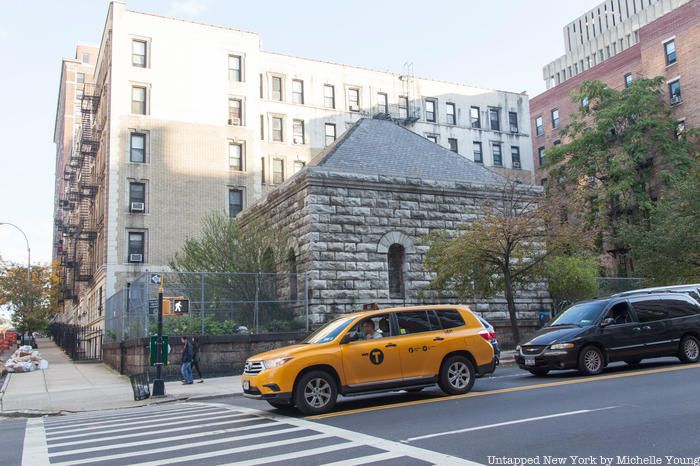
New York City faced high demand for water following the Great Fire of New York in 1835. The solution to the lack of freshwater was the Old Croton Aqueduct, which went into service in 1842. It was one of the first modern aqueduct systems in the United States and brought water across 41 miles by gravity alone.
The aqueduct was originally a single pipe that crossed the Harlem River, but it could not sustain the city’s rapidly growing needs. During this time, an engineering team led by John B. Jervis started building High Bridge. It opened in 1848 and brought water from the Croton River in Westchester County to Upper Manhattan via two 36-inch pipes inside the bridge. In the early 1860s, the two pipes were replaced by one 90-inch pipe.
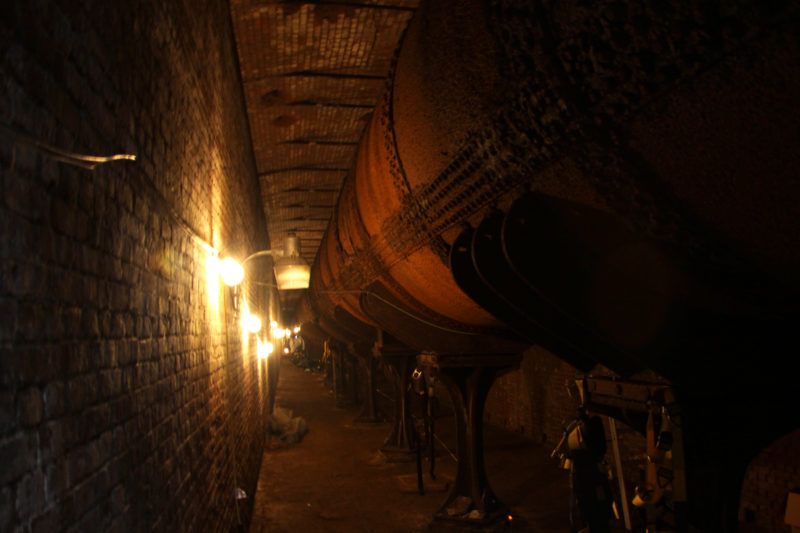
At either end of the bridge, there are attic spaces connected by a catwalk, where one can see the remnants of the Old Croton Aqueduct. The remains of the aqueduct system run along the underside of the bridge, according to Alyssa Loorya, President and Principal Investigator of Chrysalis Archaeological Consultants.
In the attic space on the Manhattan side, there is leftover graffiti from the Works Projects Administration era, a New Deal Agency which gave jobs to the unemployed to carry out public service projects.
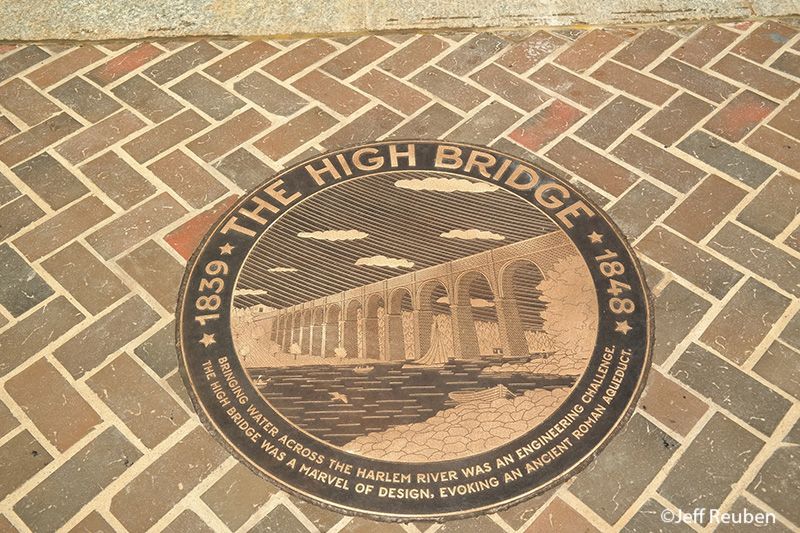
When High Bridge was used for water delivery from upstate to New York City, 90 million gallons of water were being transported from the Croton Reservoir to New York City. To improve navigability across the Harlem River and because the masonry was considered hazardous to ships by the United States Army Corps of Engineers, the five original stone arches were replaced by a single steel arch.
At this time, there was a possibility that the bridge would be torn down entirely, as Manhattan now had access to other supplies of water including water from the Catskill region, which was funded by the Board of Water Supply in the early 1900s. Ultimately, the bridge was preserved and continued to be used for water delivery.
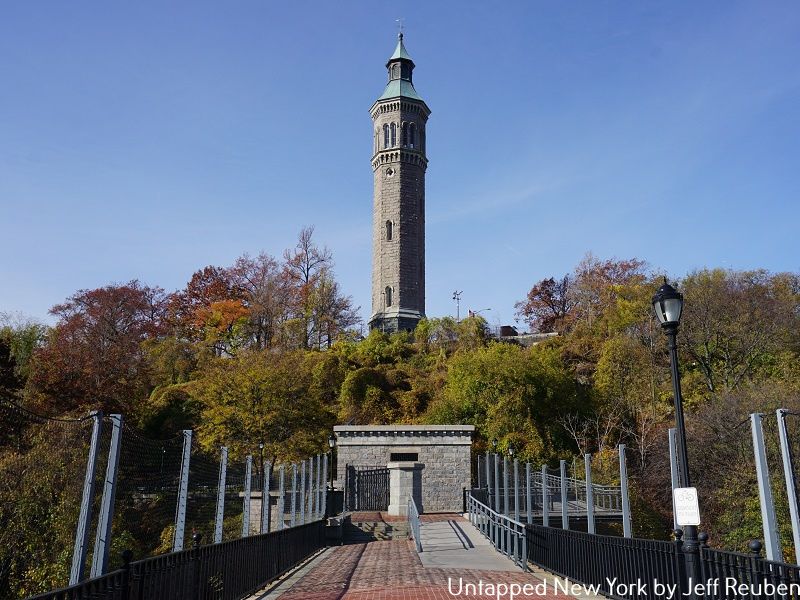
The Highbridge Water Tower was completed in 1872, 24 years after the bridge was built.
The original purpose of the water tower was to increase the water pressure following the development of the upper areas of Washington Heights and the emergence of the flush toilet. The result was an overall improvement in the water system’s gravity pressure.The water tower is approximately 170 feet and rises 200 feet above sea level on one of the highest points in Manhattan. When it was still in use, it had a 47,000-gallon water tank and a pumping engine that forced water up the tank.
During World War I, the tower was shut down due to a sabotage scare, and it was completely removed from service in 1949. Now, following a $5 million restoration, the Highbridge Water Tower is once again open for tours. Stay tuned for an announcement about an upcoming tour for Untapped New York Insiders.

At the height of its popularity, High Bridge was a pedestrian link from the Bronx to Manhattan. It’s commonly said that the bridge was frequented by Edgar Allan Poe, but that in fact is a myth. There is debate about why and when the bridge was closed, but the most popular story says that the bridge was closed in the 1960s due to an incident that happened in the ’50s. During this time, pedestrians would throw sticks, rocks, and other debris at the Circle Line boats when they passed under the bridge in the Harlem River.
As Ellen Macnow, High Bridge Project Coordinator for the Parks Department, told Gothamist in 2013, “youths – ‘hoodlums’ in the parlance of the day – in 1952, 1953, 1954, who were throwing things off the bridge and they injured people on the Circle Line.” The bridge closed down to pedestrians for over forty years and would remain closed until 2015.
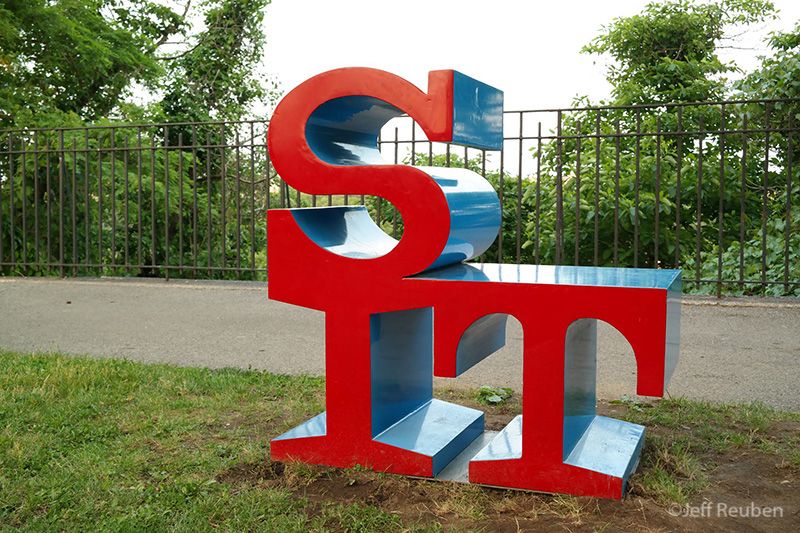
When High Bridge reopened to the public in June of 2015, the Art in the Parks program commissioned a project called “Oh Sit! 14 Sculptors Consider the Chair,” wherein nine artists created art that reflected on the simple concept of sitting down in a chair.
The sculptures were placed along the esplanade leading up to High Bridge and included abstract renderings of a table and chairs and a chair made of the letters that spell “sit.” The exhibit was on display until November 2015.
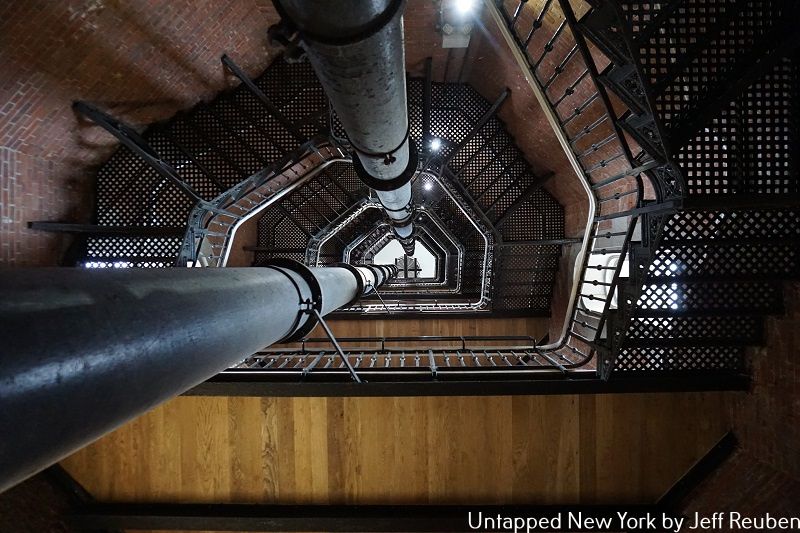
In 1958, a five-octave electronic carillon was installed in the belfry of the Highbridge Water Tower. The carillon was donated by the Altman Foundation and put in place in memory of the foundation’s founder, Benjamin Altman. The carillon was a set of bells in the tower that were controlled by a keyboard.
When it was first installed, the carillon had a daily schedule during which it would chime for 10 to 15 minutes at noon and three to five minutes all other times. On Monday through Friday, it would chime at 8 am, 12 pm, and 6 pm, and on Saturdays and Sundays, it chimed at noon and 6 pm. The carillon has since been removed.
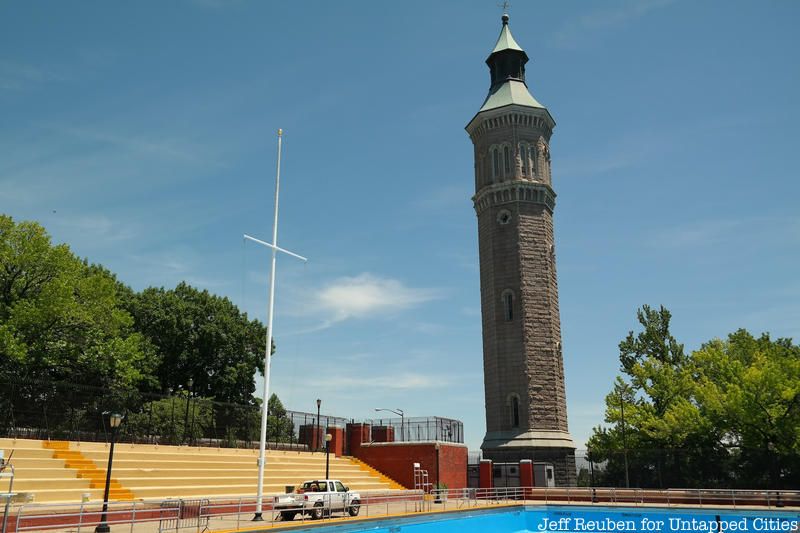
Located in the northernmost end of Highbridge Park, Fort George Amusement Park was known by some as Harlem‘s Coney Island. The amusement park opened in 1895 between 190th and 192nd Streets on Amsterdam Avenue in the area called Paradise Park.
It featured two Ferris wheels, three roller coasters, a casino, and other attractions. The park burned down in 1913 and was not rebuilt. Though the amusement park is long gone, Fort George Playground still stands in the same area.
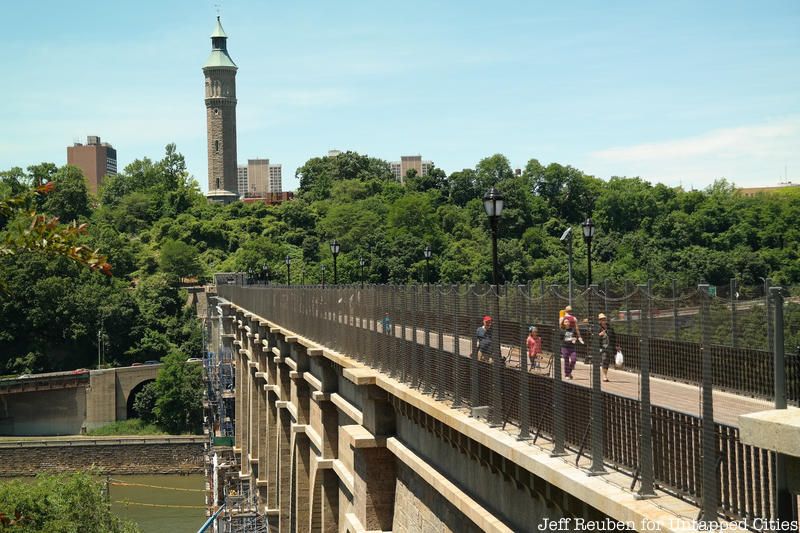
When trying to figure out the most efficient way to transport water from the Croton Aqueduct, there was debate about how to structure the bridge. Civil engineer, David Bates Douglass, was commissioned to take the lead on the aqueduct project, and he suggested a high bridge that would “lend to New York some of the imperial grandeur of imperial Rome.”
Others vouched for a lower bridge that would cover most of the river but would be cheaper by over $500,000. Douglass was later replaced as chief engineer by John B. Jervis. Though he, too, had the preference for a low bridge, the high bridge was ultimately built due to demand from the people of the city for a grand bridge.
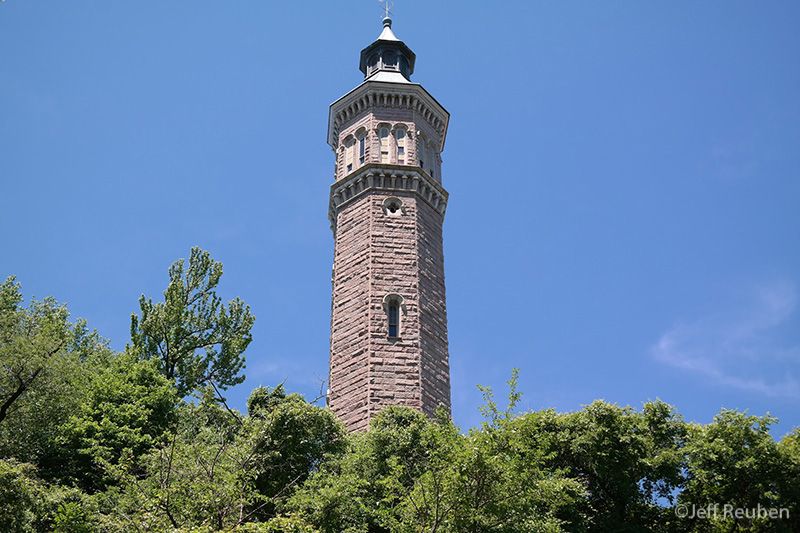
On July 12, 1967, the Highbridge Water Tower was named a New York City landmark by the Landmarks Preservation Commission. More than three years later in November of 1970, the High Bridge Aqueduct and Pedestrian Walkway was named a New York City landmark.
Next, read about the 8 Historic Buildings and Structures You Can Legally Climb in NYC!
Subscribe to our newsletter